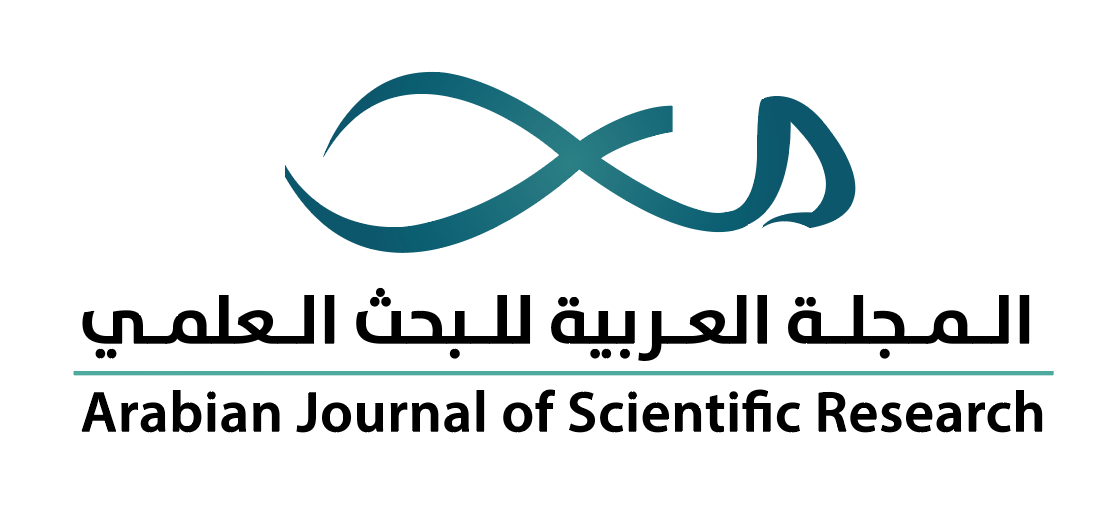-
oa تقدير مخاطر استخدام أسلحة اليورانيوم المنضّ ب في العراق - الجزء الثاني
- Source: Arabian Journal of Scientific Research-المجلة العربية للبحث العلمي, Volume 1 (2020), Issue 1, Feb 2020, 4
-
- 29 October 2019
- 12 November 2019
- 28 February 2020
Abstract
الملخص
لقد تم حساب الجرعة الفعالة الجماعية في مناطق الدراسة، واستُخدمت معاملات الخطورة المعتمدة من منظمات دولية متخصصة بالتلوث الإشعاعي، مثل اللجنة الدولية للوقاية من الإشعاع (ICRP) ولجنة الأمم المتحدة العلمية المعنية بآثار الإشعاع الذري (UNSCEAR) لتحديد إجمالي حالات الإصابة بالأمراض السرطانية المميتة وغير المميتة وسرطان الدم (اللوكيميا) والأمراض الأخرى ذات العلاقة بالتلوث الإشعاعي المحتمل حصولها بين سكان مناطق الدراسة. أشارت نتائج هذه الدراسة أن إجمالي حالات الإصابة بالأمراض السرطانية المميتة وغير المميتة وسرطان الدم (اللوكيميا) المتوقعة في مدينة صفوان بحدود 1930 حالة وتمثل ما نسبته 7.2% من مجموع السكان، وبحدود 9141 حالة في مدينة الزبير وتمثل ما نسبته 4.5% من مجموع نسبة السكان، وبحدود 4475 حالة إصابة لغرب مدينة البصرة وتمثل ما نسبته 4.5% من مجموع السكان. وقد أكدت دراسات سريرية نشرها أطباء اختصاصيون في جامعة البصرة خلال تسعينيات القرن الماضي وجود هذه الزيادات. كما أن إجمالي حالات الإصابة بالأضرار الصحية الأخرى والأمراض الوراثية التي تظهر كتشوهات خلقية متوقعة في الأجيال القادمة بحدود 1831 حالة في مدينة صفوان، أي بنسبة 6.9% من مجموع السكان، وبحدود 8648 حالة في مدينة الزبير، أي بنسبة 4.2% من مجموع السكان، وبحدود 4234 حالة في غرب مدينة البصرة، أي بنسبة 4.2% من مجموع السكان. كذلك سيعاني ما يقرب من 14350 من أفراد القوات المسلحة العراقية التي وُجدت في قواطع صفوان والزبير وغرب مدينة البصرة أمراضًا سرطانية مميتة، إضافة إلى اللوكيميا والاعتلالات الصحية الأخرى خلال السنوات القادمة، أي ما نسبته 11.5% من القوات المشاركة في العمليات الحربية ضمن منطقة الدراسة آنذاك.
In Part I of this study, I defined the effective radiation doses received by the residents and armed forces in areas contaminated by Depleted Uranium (DU) in southern Iraq. This contamination resulted from the intensive use of (DU) munitions by US /UK armed forces during the first Gulf War of 1991. Since DU is a radioactive and a toxic substance, it is presented in this article (Part II) an assessment of the health risks resulted from this radiation.
The collective effective doses were calculated for each city in the study areas. The risk factors adopted by international organizations, such as International Commission on Radiological Protection and The United Nations Scientific Committee on the Effects of Atomic Radiation, were used to determine the total incidence of fatal and non-fatal cancers and other related health damages. The results indicated that the total expected incidence of fatal, non-fatal cancers, and leukemia in the city of Safwan is up to 1930 cases, which represented 7.2% of total population; and up to 9141 in the city of Zubair, which represented 4.5% of the total population; and up to 4475 cases in westernt Basra, which represented 4.5% of the total population. Articles published by the University of Basra and on-site surveys confirmed such increases among small village residents. Total expected incidence of other health damages and genetic diseases that appeared as congenital malformations in future generations are up to 1831 cases in the city of Safwan, or 6.9% of the total population, and up to 8648 cases in Zubair city, which represents 4.2% of the total population, and up to 4234 cases in western Basra, or 4.2% of the total population. Some 14,350 members of the Iraqi Armed Forces, who were present in these areas during military operations are highly to suffer from fatal cancer, leukemia and other health damages in the future.


